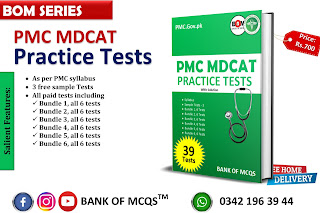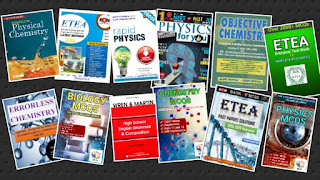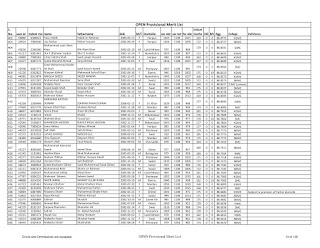Chap.26 Biotechnology MCQs
|
1. |
|
|
|
2. |
Which
type of ecosystem has the smallest raction of nutrients in the soil? (a)
Savanna (b) Tundra (c)
Desert (d) None of
these |
C |
|
3. |
Which
biome has the richest soil with nutrients? (a)
Coniferous forest (b) Grassland (c)
Desert (d) None of
these |
A |
|
4. |
Fresh
water ecosystem covers less than: (a)
1% (b) 3% (C)
5% (d) None |
A |
|
5. |
It
is divided into littoral, limnetic, profundal Zones (a)
Freshwater lake (b) Desert (c)
Grassland (d) None of
these |
A |
|
6. |
Which
one is not correct for littoral zone? (a)
Shallow water (b) Plankton (c)
Detritivores (d) None of
these |
A |
|
7. |
Which
one is not related with eutrophication? (a)
Depletion of (b)
Foul Smell (c)
Fish Dominant (d) None of these |
C |
|
8. |
Average
rainfall in temperate deciduous forest is: (a)
500-1000 mm (b) 750-1500 mm (c)
1500-3000 mm (d) None of these |
B |
|
9. |
Northern
charms forests are called (a)
Alpine (b) Taiga ©)
Tundra (d) None of
these |
A |
|
10. |
Grassland
in temperate climate is called: (a)
Prairie (b) Savanna (c)
Taiga (d) None of
these |
A |
|
11. |
The
dominant plant of grassland is:. (a)
Shrubs (b) Graminnoid (c)
Legumes (d) None of
these |
B |
|
12. |
The
type of gel most commonly used for short fragment DNA electrophoresis is: (a)
Agarose (b) DNA Polymerase (c)
Polyacrylamide (d) DNA Ligase |
C |
|
13. |
Cell
suspension culture of Cinchona ledgeriana produces: (a)
Quinine (b) Digitoxin (c)
Polludrin (d) Antitoxin |
A |
|
14. |
Dideoxy
ribonucleoside triphosphates are used to terminate DNA synthesis at different
site Which method involves this procedure? (a)
Maxam - Gilbert's Method (b)
Sanger's Method (c)
K.B Mullis Method (d)
Gottlieb's Method |
A |
|
15. |
The
gene of choice can also be synthesized in the laboratory from mRNA, using reverse
transcriptase. This DNA molecule is called: (a)
Complementary DNA (b)
Replicative DNA (c)
Synthetic DNA (d)
SS DNA |
A |
|
16. |
The
gene of interest is joined with the sticky ends produced after cutting the
plasmid with the
help of another special enzyme known as: (a)
DNA Ligase (b)
DNA Polymerase (c)
Restriction Endonuclease (d)
Reverse Transcriptase |
A |
|
17. |
The
enzyme DNA polymerase can work only in: (a)
3'-5 Direction (b) 5-3 Direction (c)
Both the Directions (d) 5 - 5 Direction |
B |
|
18. |
In
recombinant DNA technology, a plasmid vector is cleaved by: (a)
Modified DNA ligase (b)
A heated alkaline solution (c)
The same enzyme that cleaves the donor DNA (d)
The different enzyme other than that cleave the donor DNA. |
C |
|
19. |
Thermus
aquaticus is the source of: (a)
Taq Polymerase (b) Vent Polymerase (c)
Botha and b (d)
Primase Enzyme |
A |
|
20. |
The
complete set of chromosomal and extra chromosomal genes of an organism is
called: (a)
Genome (b) Gene Pool (c)
Gene Bank (d) Gene Library |
A |
|
21. |
A
totipotent cell means (a)
An undifferentiated cell capable of developing into a system or entire plant (b)
An undifferentiated cell capable of developing into an organ (c)
An undifferentiated cell capable of developing into complete embryo (d)
Cell which lacks the capability to differentiate into an organ or system |
B |
|
22. |
Naturally restriction enzymes are found in (a)
Bacteria (b) Virus (c)Fungi (d) All of these |
A |
|
23. |
Smal
is an example of an enzyme that generates (a)
Sticky Ends (b)
Blunt Ends (c)
Overhangs (d) None of these |
B |
|
24. |
Plasmid
PBR322 carries antibiotic resistant gene: (a)
Ampicillin (b) Tetracycline (c)
Both of these (d) None of these |
C |
|
25. |
Which
of the following components is necessary to carry out a PCR reaction? (a)
Template DNA (b)
Deoxy Ribonucleoside, Triphosphates (dNTPs) (c)
Primers (d)
Taq Polymerase (c)
All of these |
E |
|
26. |
In
PCR, the complete denaturation of DNA takes place at a temperature of: (a)
54°C (b) 20°C (c)
10°C (d) 94 C |
D |
|
27. |
A
DNA sequencing method called chemical cleavage method was developed by: (3)
Maxam and Gilbert. (b)
Hershey and Chase (c)
Watson and Crick (d)
Beadle and Tatum |
A |
|
28. |
A
collection of bacterial or bacteriophage clones, each containing at least one
copy of every
DNA sequence in a genome of an organism is known as: (a)
DNA Probe (b)
DNA Fingerprinting (c)
Genomic Library (d)
PCR |
C |
|
29. |
Southern
blotting method is used for the detection of a specified: (a)
Hormone (b) Enzyme (c)
Protein (d) DNA
Sequence |
D |
|
30. |
Which
of the following is a commonly used DNA marker? (a)
RFLPS (b)
VNTRS (c)
SNP (d)
Microsatellite Polymorphism (e)
All of these |
E |
|
31. |
Human
genome project revealed that human DNA is made up of: (a)
25000 Base Pairs (b)
300 Base Pairs (c)
3 Million Base Pairs (d)
3 Billion Base Pairs |
D |
|
32. |
The
initial plant part which is used to develop tissue culture is called: (a)
Callus (b)
Explant (c)
Cell-Suspension Culture (d)
Somatic Embryo |
B |
|
33. |
A culture
technique which involves recombination of different cell types to form a more
defined tissue or an organ is known as: (a)
Tissue Culture (b) Organotypic
Culture (c)
Anther Culture (d) Protoplasts
Culture |
A |
|
34. |
The
first genes available for genetic engineering of crop plants for pest
resistance were: (a)
SRY Gene (b) Polygenes (c)
Cry Genes (d) None of these |
C |
|
35. |
First
transgenic bacterium was produced in: (a)
1906 (b) 1941 (c)
1928. (d) 1973 |
D |
|
36. |
Removal
of environmental pollutants by organisms is known as: (a)
Bioremediation (b) Biosafety (c)
Biosynthesis (d)
Transformation |
A |
|
37. |
Somatic
cell hybridization technique is used for the production of: (a)
Transgenic Animals (b)
Monoclonal Antibodies (c)
DNA Probes (d)
Liposomes |
B |
|
38. |
A
technique for correcting defective genes responsible for disease development
is known as: (a)
Genetic Engineering (b)
Tissue Culture (c)
Recombinant DNA Technology (d)
Gene Therapy |
D |
|
39. |
Radioactive
or fluorescent single stranded nucleotide sequence that will hybridize (pair)
with a certain piece of DNA to search a genetic library for a certain gene is
known as: (a)
Probe (b)
Recombinant DNA (c)
Promoter (d Vector |
A |
|
40. |
First
DNA fingerprint was made in 1985 by: (a)
Landsteiner (b) A. Jeffrey (c)
Bateson (d) Sturtevant |
B |
|
41. |
Liposome,
which carries the therapeutic DNA. is chemically: (a)
Carbohydrate (b) Protein (c)
Hormone (d) Lipid |
D |
|
42. |
The
human genome is times larger than any other genome sequenced so far. (a)
2 (b) 5 ©
25 (d) 60 |
A |
|
43. |
Which
of these is a true statement? (a)
Both plasmids and viruses can serve as Vectors (b)
Plasmids can carry recombinant DNA but viruses cannot ©
Vectors carry only the foreign gene into the host cell (d)
Only gene therapy uses vectors (e)
Both a and d are correct |
E |
|
44. |
Which
of these is a benefit to having insulin. produced by biotechnology? (a)
It is just as effective (b)
It can be mass produced (c)
It is non-allergic (d)
It is less expensive (e)
All of these are correct |
E |
|
45. |
Restriction
fragment length polymorphism (RFLPS): (a)
Are achieved by using restriction enzymes (b)
Identify individuals genetically (c)
Are the basis for DNA finger prints (d)
Can be subjected to gel electrophoresis (e)
All of these are correct |
E |
|
46. |
Which
of these would you not expect to be a biotechnology product? (a)
Vaccine (b) Modified
Enzymes (C)
Protein Hormones (d) DNA Probes (e)
Steroid Hormones |
E |
|
47. |
What
is the benefit of using a retrovirus as a vector in gene therapy? (a)
It is not able to enter the cell (b)
It incorporates the foreign gene into the host chromosome (c)
It prevents infection by other viruses (d)
It eliminates a lot of unnecessary steps |
B |
|
48. |
Gel
electrophoresis: (a)
Cannot be used on nucleotide (b)
Measures the size of plasmids (C)
Tells whether viruses are infectious (d)
Measures the change and size of proteins and DNA fragments (e)
All of these are correct |
D |
|
49. |
Which
of these is incorrectly matched? (a)
Protoplast-plant cell engineering (b)
RFLPS-DNA fingerprinting (C)
DNA polymerase – PCR (d)
DNA ligase-mapping human chromosomes. |
D |








Comments
Post a Comment